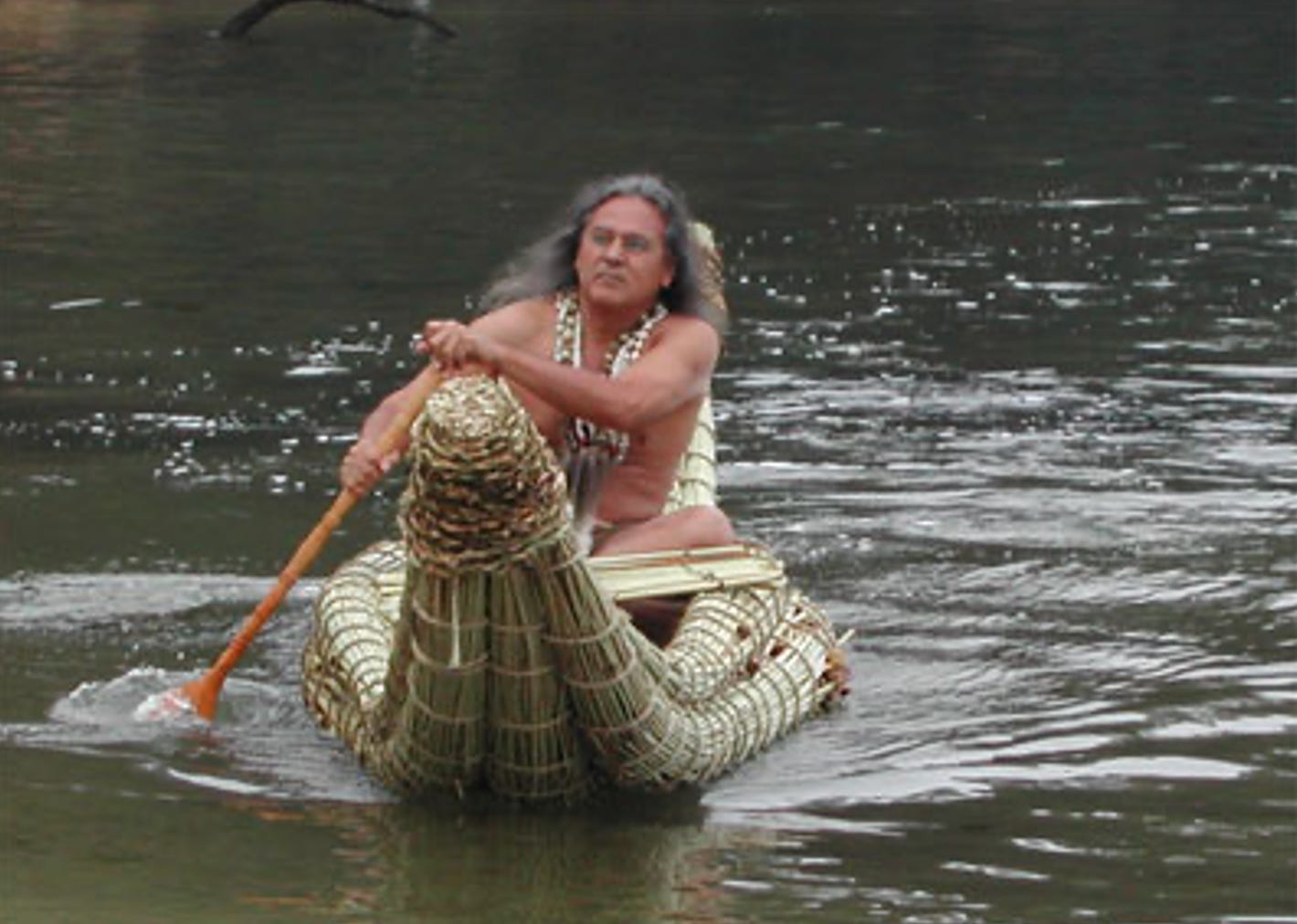A series from Mike Smith
In the following series of articles, Mike Smith will explore some well-known and less well-known boat types, construction methods, and building materials used around the world historically.
Typically these regional designs from disparate cultures served (or continue to serve) their particular purpose well. Is there anything we can still learn from these traditional designs and methods? Any features of these designs or perhaps a choice of materials we could apply to our own recreational small boats?
As the author contends, there may be some fine details that evolved to serve their purpose well and have since been overlooked by modern designers and builders. —Eds
Reed Boats of the World
The reed boats of Lake Titicaca are made from Totora reeds. The giant bulrush sedge known as Tule reeds in California, are found around the world – all the way from Egypt to Rapa Nui; Easter Island. As a 13 year old (in 1968), my fixation was kayaks, and all my life I have wanted to build native craft. I only had small pictures to work from in our dictionary, or questionable articles in Popular Mechanics, but I had no one to teach me how to make a reed boat. The basics were obvious, but the trick was how to wrap bundles of reeds. Clearly one either needed lots of twine, or could learn how to wrap the bundles using the reeds themselves. There was a little more to it than a 13 year old could figure out by himself.
Aymara Totora Reed Boat in the Smithsonian
The earliest record of reed boats is from Egypt:
Turns out, there were adults near me in Woodacre, CA experimenting with this, but I never met them. These photos are from The Watershed Preservation Network from around 1998:
These boats have a nice shape that will clearly handle some chop on inland waterways.
Interestingly, The only known year round native occupation site in Marin County CA was a tiny watershed like that behind these paddlers at the very tip of the Tomales Bay. There were stable and abundant fresh water, food and shelter, and Tule reed for boats.
It wasn’t until I got to the Uros Islands of Lake Titicaca that I saw firsthand a modern culture still active in creating the artifacts of their pre-contact lives. There are today 51 indigenous peoples living in Peru, 31 of which live in the surrounds of Lake Titicaca. I was fascinated, because these are peoples who predated the Incas and European contact. While the Incas were decimated, the smaller communities have survived.
It may seem that those on the floating Uros Islands live in a tourist attraction, but the income from visitors is actually keeping a tradition alive that might otherwise perish. While some of these creations are elaborate, and possibly altered by modern senses, they are authentic in that they have their roots in prehistory.
Cultural artifacts from prehistory could be divided into three groups; hard such as clay pots, stone mortar and pestles, axes, knives and arrowheads, soft such as baskets, fabrics and intermediate such as wood lodges, tipis and kayaks. The reed boats are between soft and intermediate. They may seem fragile and prone to waterlogging, but kept out of the water, I think the boats last at least one full season.
The basic boat is scalable to whatever task might be at hand, and useful enough that the technique is not about to die out. We may run out of polyester resins, but the world will most likely always have reeds available.
The basic construction is two bundles side-by-side, and interwoven with lashings. A small bundle is added to the top for a rail. Catamarans can be constructed by combining a pair of these canoes.
By the way, if you do go to Titicaca, make sure you make it out to Taquile Island. At only 2 sq miles, the women manage the small environment. The men knit, and the women handle the money. If a man cannot knit well, he may not marry, and must move off-island. The small patches of land are inherited matrilineal. The patterns on their caps have a small difference, which shows whether you are married or single. Don’t miss it.
Credits:
https://www.researchgate.net/profile/Miran-Eric
https://en.wikipedia.org/wiki/Taquile_Island#
https://www.wpn.org/wpn/programoverview.htm
https://minorityrights.org/country/peru/
https://www.peruforless.com/blog/floating-uros-islands/













I had a tape of sailing craft still in use around the world. One of the boats was reed sailboats. The interesting thing was the boat was very unstable until the sails were raised and the boats took off down the Nile sailing as well as any modern sailboat. Maybe these guys were on to something!
where can I buy something like this?